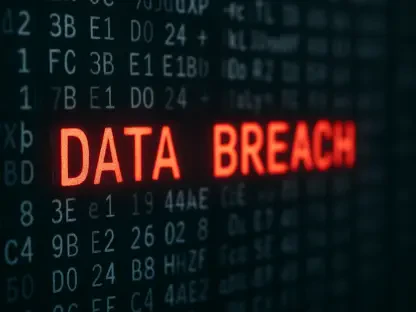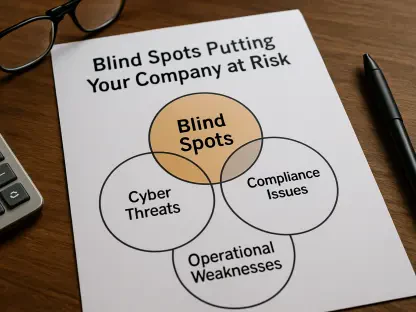In a digital landscape where a single overlooked bug can cost millions, the urgency for airtight code security has never been more pressing, especially as cyberattacks surge, costing global businesses over $6 trillion annually according to recent cybersecurity reports. Picture a major financial platform grinding to a halt because of a tiny flaw in its codebase, exposing sensitive data to hackers. With this backdrop, a new player has entered the arenOpenAI’s Aardvark, powered by the formidable GPT-5, promises to transform how vulnerabilities are detected and resolved. This autonomous security agent could be the key to safeguarding software in an era of relentless threats.
The significance of this innovation cannot be overstated. As software underpins critical sectors like healthcare, finance, and infrastructure, the smallest security gap can have catastrophic consequences. Aardvark aims to address this by embedding AI-driven protection directly into development pipelines, offering real-time solutions that outpace traditional methods. This development marks a pivotal shift in cybersecurity, where human limitations are supplemented by relentless, intelligent automation. The stakes are high, and the potential for Aardvark to redefine code protection is a story worth exploring.
A New Era of Code Protection: Why Aardvark Matters Now
Amid the escalating complexity of software systems, the arrival of Aardvark signals a turning point for developers and security experts. Launched earlier this year by OpenAI, this tool harnesses the power of GPT-5 to act as an autonomous security researcher. Its mission is clear: to detect and mitigate vulnerabilities before they can be exploited, providing a level of vigilance that manual processes struggle to match.
The timing of this release is critical. With development cycles accelerating and codebases expanding, the window for human error widens. Aardvark steps into this gap, offering a proactive shield against threats that evolve faster than teams can respond. Its ability to integrate seamlessly into existing workflows makes it a practical ally for organizations of all sizes, from tech giants to small open-source communities.
This shift toward AI-driven security reflects a broader recognition of the need for scalable solutions. As cyber threats grow in sophistication, tools like Aardvark are positioned to redefine industry standards. The promise of continuous protection without slowing innovation is a compelling proposition for a field under constant siege.
The Rising Threat Landscape: Why Code Security Needs AI
Cybersecurity challenges have reached unprecedented levels, with breaches exploiting code flaws becoming a daily headline. Recent studies estimate that over 80% of successful attacks stem from vulnerabilities that could have been patched if identified early. The financial and reputational damage is staggering, pushing companies to rethink their defense strategies in a high-stakes environment.
Manual code reviews, once the cornerstone of security, are increasingly inadequate. The sheer volume of code produced in modern development—often spanning millions of lines—overwhelms even the most dedicated teams. Compounded by rapid deployment schedules, this creates a perfect storm where critical issues slip through undetected until it’s too late.
AI tools like Aardvark offer a lifeline in this crisis. By automating the detection and prioritization of vulnerabilities, such solutions bridge the gap between limited human resources and the relentless pace of cyber threats. This technological leap is not merely an enhancement but a necessity to keep pace with adversaries who exploit every possible weakness.
Unpacking Aardvark: How GPT-5 Drives Next-Level Security
At its core, Aardvark stands out as a sophisticated security agent designed to embed itself into the heart of software development. Powered by GPT-5’s advanced reasoning, it monitors code repositories for changes, instantly flagging potential issues as they emerge. This real-time oversight ensures that problems are caught at the earliest stage, minimizing risk exposure.
Beyond detection, the tool excels in assessing the severity of vulnerabilities and prioritizing fixes based on their potential impact. It constructs tailored threat models aligned with a project’s specific security goals, while also generating patches through OpenAI Codex for human review. These patches are tested in sandboxed environments to confirm their effectiveness, showcasing a depth of analysis that sets Aardvark apart from traditional tools.
Early results speak to its promise, with OpenAI reporting that Aardvark identified 10 significant vulnerabilities in open-source projects during testing phases. Compared to competitors like Google’s CodeMender, which focuses on rewriting vulnerable code, Aardvark’s comprehensive approach—spanning monitoring to remediation—positions it as a formidable contender in the race to secure software at scale.
Voices from the Field: Expert Insights and Early Feedback
Feedback from those who’ve tested Aardvark paints a vivid picture of its real-world impact. A lead developer from an alpha testing group noted, “The workload reduction is immense—Aardvark catches issues we’d miss under tight deadlines, without bogging down our process.” This sentiment echoes across early adopters who praise its balance of precision and efficiency.
Security analysts have also weighed in, highlighting the tool’s proactive stance. One industry expert compared it to XBOW, another AI security platform, stating, “While XBOW excels in static analysis, Aardvark’s dynamic threat modeling adapts to evolving risks in a way that feels almost intuitive.” Such endorsements underline a growing consensus on AI’s indispensable role in modern cybersecurity.
OpenAI’s data further bolsters these claims, with documented discoveries of critical flaws during beta phases. This “defender-first” philosophy, as the company describes it, resonates with professionals seeking reliable partners in vulnerability management. The collective voice from the field suggests that Aardvark is not just a tool but a transformative force for overburdened teams.
Making Aardvark Work for You: Practical Steps for Integration
For teams eager to adopt Aardvark, the path to implementation is straightforward yet customizable. The first step involves connecting the tool to code repositories, enabling seamless monitoring of commits and changes. This setup ensures that the AI agent operates as an invisible guard, scanning for issues without disrupting daily workflows.
Customization is equally vital, allowing users to define threat models that reflect their project’s unique risks and priorities. Teams can further optimize collaboration by establishing clear protocols for reviewing AI-generated patches, ensuring human oversight complements automated insights. This balance fosters trust in the system while maintaining control over critical decisions.
To maximize long-term benefits, continuous learning must be prioritized. By leveraging Aardvark’s ongoing analysis, organizations can stay ahead of emerging threats, adapting to new attack vectors as they arise. Whether for a sprawling enterprise or a nimble startup, these actionable strategies make the tool’s power accessible, paving the way for stronger, more resilient codebases.
Looking Ahead: The Future of Code Security with Aardvark
Reflecting on the journey of Aardvark, it becomes evident that this tool marks a turning point in how vulnerabilities are tackled. Its integration of GPT-5’s capabilities with practical security needs offers a glimpse into a safer digital landscape. The early successes, from identifying critical flaws to easing developer burdens, underscore a shift that many have long awaited.
Moving forward, the challenge lies in scaling such innovations to meet diverse industry demands. Teams are encouraged to explore Aardvark’s potential within their own pipelines, testing its adaptability across varied projects. Collaboration between AI developers and security professionals promises to refine these tools further, addressing edge cases that emerge over time.
The broader vision remains one of democratized protection, where even resource-constrained groups can access top-tier defenses. As the cybersecurity landscape continues to evolve, the groundwork laid by Aardvark suggests a future where proactive, intelligent systems become the norm. Embracing this momentum is the next step toward securing software for generations to come.









